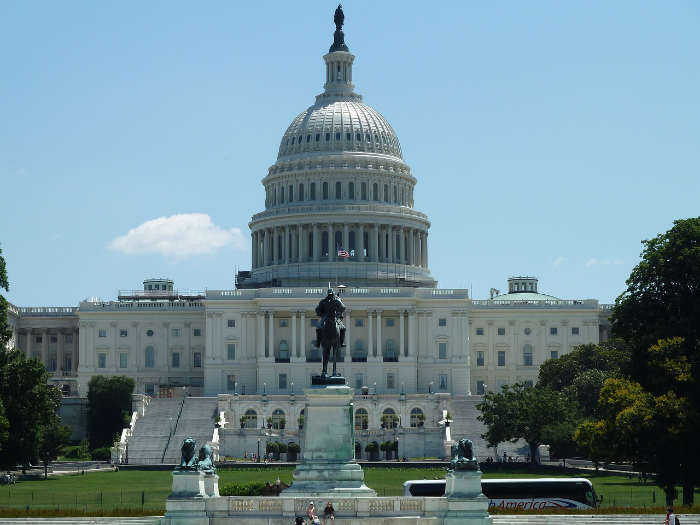Obesity Rate by State 2025
Obesity Rate
State | Obesity Rate 2023↓ | Confidence Interval 2023 | |
|---|---|---|---|
| West Virginia | 41.2% | (39.3, 43.0) | |
| Mississippi | 40.1% | (37.9, 42.2) | |
| Arkansas | 40% | (38.2, 41.9) | |
| Louisiana | 39.9% | (38.1, 41.7) | |
| Alabama | 39.2% | (37.3, 41.3) | |
| Oklahoma | 38.7% | (37.2, 40.2) | |
| Indiana | 37.8% | (36.6, 39.1) | |
| Iowa | 37.8% | (36.4, 39.2) | |
| Tennessee | 37.6% | (35.8, 39.4) | |
| Nebraska | 36.6% | (35.4, 37.8) | |
| Ohio | 36.4% | (35.2, 37.7) | |
| Illinois | 36% | (34.1, 37.9) | |
| South Carolina | 36% | (34.5, 37.4) | |
| South Dakota | 36% | (33.0, 39.2) | |
| Kansas | 35.9% | (34.6, 37.3) | |
| Wisconsin | 35.9% | (34.7, 37.2) | |
| Delaware | 35.7% | (33.5, 38.0) | |
| North Dakota | 35.6% | (33.9, 37.3) | |
| Michigan | 35.4% | (34.0, 36.8) | |
| Missouri | 35.3% | (33.7, 36.9) | |
| New Mexico | 35.3% | (32.7, 38.0) | |
| Alaska | 35.2% | (33.3, 37.0) | |
| Georgia | 35% | (33.4, 36.7) | |
| Texas | 34.4% | (32.7, 36.2) | |
| Virginia | 34.3% | (32.6, 36.0) | |
| Maryland | 34.1% | (32.8, 35.3) | |
| North Carolina | 34% | (31.9, 36.2) | |
| Oregon | 33.6% | (32.0, 35.3) | |
| Minnesota | 33.3% | (32.1, 34.4) | |
| Wyoming | 33.3% | (31.5, 35.2) | |
| New Hampshire | 32.8% | (31.0, 34.6) | |
| Maine | 32.6% | (31.4, 33.9) | |
| Arizona | 31.9% | (30.5, 33.3) | |
| Rhode Island | 31.6% | (29.7, 33.5) | |
| Idaho | 31% | (29.4, 32.5) | |
| Nevada | 30.8% | (27.9, 33.8) | |
| Washington | 30.6% | (29.8, 31.4) | |
| Montana | 30.5% | (29.0, 31.9) | |
| Utah | 30.2% | (29.0, 31.4) | |
| Florida | 30.1% | (28.4, 31.8) | |
| Connecticut | 29.4% | (27.9, 30.9) | |
| New Jersey | 28.9% | (27.5, 30.3) | |
| Vermont | 28.8% | (27.2, 30.4) | |
| New York | 28% | (27.0, 29.1) | |
| California | 27.7% | (26.4, 29.0) | |
| Massachusetts | 27.4% | (26.0, 28.8) | |
| Hawaii | 26.1% | (24.6, 27.7) | |
| Colorado | 24.9% | (23.7, 26.1) | |
| District of Columbia | 23.5% | (21.4, 25.8) |
- 2021 Data for Florida proved insufficient for the CDC to calculate an average. However, Florida’s own Department of Health indicates an obesity rate of 28% for that year.
- Similarly, 2023 data for Kentucky and Pennsylvania were not provided.
- Confidence interval (CI) measures the likelihood that the actual value of an estimated or calculated variable falls between two “boundary” values. For example, if a state’s obesity rate is estimated to be 10.0% and its 95% confidence interval is 9.5-10.5, there exists a 95% probability that the state’s actual obesity rate is between 9.5% and 10.5%.
- A 2019 study published in the New England Journal of Medicine projected that 48.9% of US adults would be obese by 2030, and 24.2% will qualify as severely obese.
Someone who is considered to be obese has a BMI of 30.0 or higher. Obesity is a growing concern in the United States and around the world. The United States ranks 12th in the world for obesity. According to the Centers for Disease Control (CDC), approximately 41.9% of American adults age 20 and older were obese based on 2020 data. This is twice as many as three decades ago. Approximately 19.7% of children and teens are overweight, almost four times as many as there were in the 1980s.
Obesity is the result of several factors such as overeating, lack of physical activity, poor diet choices, genetics, metabolism, and culture. Americans are more likely to consume simple carbohydrates, convenient fast food, and processed pre-packaged foods. These foods tend to be higher in calories, less filling, and less nutrient-dense, causing people to consume more calories than they need. This caloric surplus combined with a lack of physical activity and exercise causes weight gain over time.
Obesity can lead to increased health risks such as type 2 diabetes, nerve damage, kidney disease, high blood pressure, stroke, heart disease, and certain types of cancer. Obesity is the second leading cause of preventable death behind tobacco use. Because of the lasting and significant impacts of obesity, it is a significant factor in determining the healthiest and unhealthiest states.
Obesity Rate by State
According to CDC, thirty-eight states plus Puerto Rico have obesity rates above 30%. The ten states and territories with the lowest obesity rates are the District of Columbia (24.7%), Hawaii (25.0%), Colorado (25.1%), Massachusetts (27.4%), California (27.6%), Florida (28.0%), New Jersey (28.2%), Washington (28.8%), Vermont (29.0%), and New York (29.1%).
Colorado’s low obesity rate can be attributed to its culture and lifestyle. Many residents enjoy outdoor activities, such as hiking, and are generally conscious of eating whole, nutrient-dense foods, and their own wellbeing. West Virginia is the most obese U.S. state, with an obesity rate of 40.6%. West Virginia also has the highest rate of type 2 diabetes in the U.S. at 15.7%.
Severe Obesity Has Also Increased in Recent Years
The percentage of adult Americans that are severely obese has only increased in recent years, too. As we see in the data, the percentage of severely obese adult Americans rose from 4.7% in 1999-2000 to 9.2% in 2020. The percentage of severely obese adult Americans has not significantly increased since 2015-2016, but it has increased nonetheless.
Obesity Is Most Prevalent in Black American Adults
According to the data, non-Hispanic Black adults have the highest obesity prevalence when data is adjusted for age. According to the most recent data, 49.9% of non-Hispanic Black adults in the United States are obese. The data also shows that Hispanic adults have the second-highest prevalence of obesity, since 45.6% of Hispanic adults are obese, based on the data.
Non-Hispanic white American adults had the third-highest percentage of obesity. The survey indicates that 41.4% of non-Hispanic white adults are obese when you adjust for age. The ethnic group that has the lowest percentage of obesity according to the data is non-Hispanic Asian adults. The data indicates that 16.1% of Asian adults are obese.
Childhood Obesity Is Also A Major Health Concern in the U.S.
Childhood obesity is definitely a serious health issue in the United States. The percentage of children and adolescents aged 2-19 that are obese is 19.7%. In other words, approximately 14.7 million adolescents and children are obese in the United States. It is also crucial to note that the percentage of childhood obesity is highest among adolescents aged 12-19. The percentage of obese American adolescents aged 12-19 is 22.0%.
Middle-Aged Americans Are More Likely to Be Obese
Age is another factor that is important to consider when talking about obese Americans. Adult Americans that are aged 20-39 have an obesity prevalence of 39.8%, meaning almost 40% of them are obese. This percentage increases among adult Americans aged 40-59 since 44.3% of them are obese. The prevalence of obesity is 41.5% among American adults aged 60 and older.



















